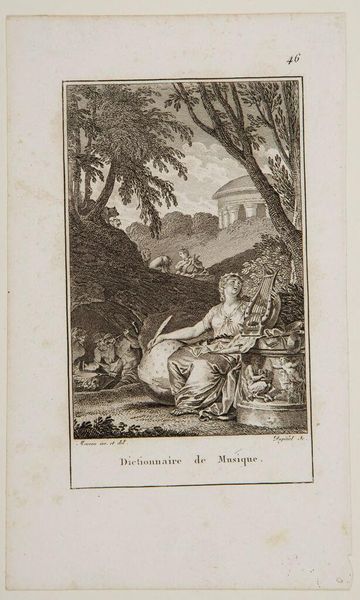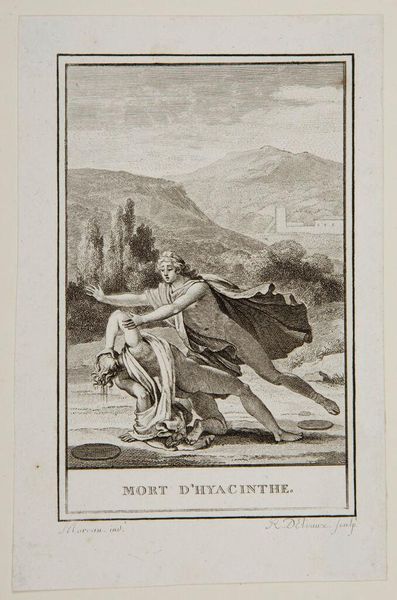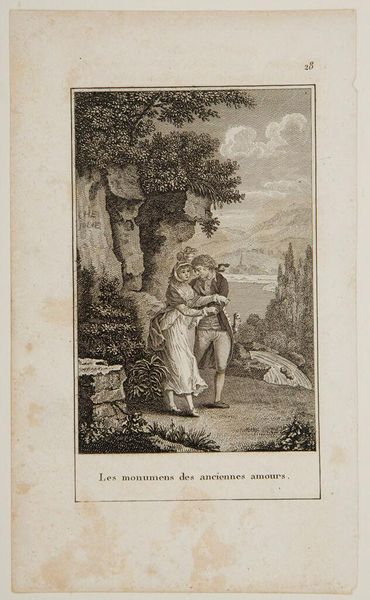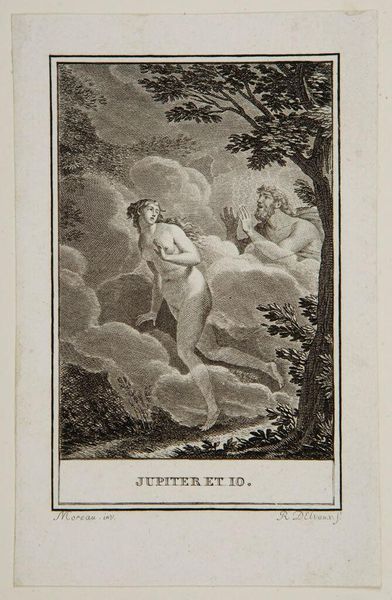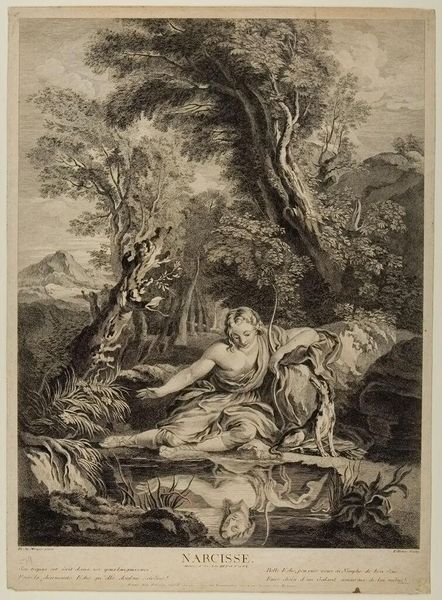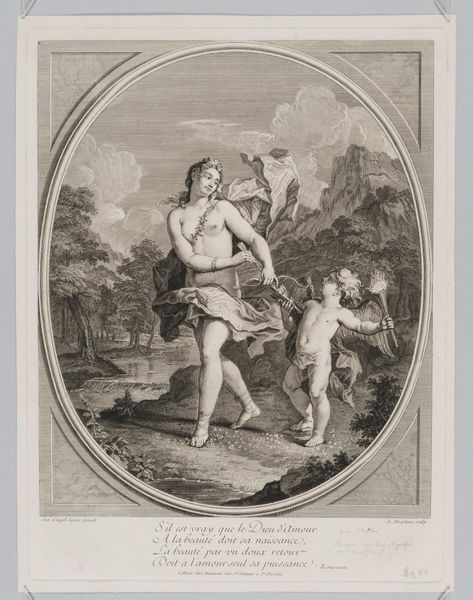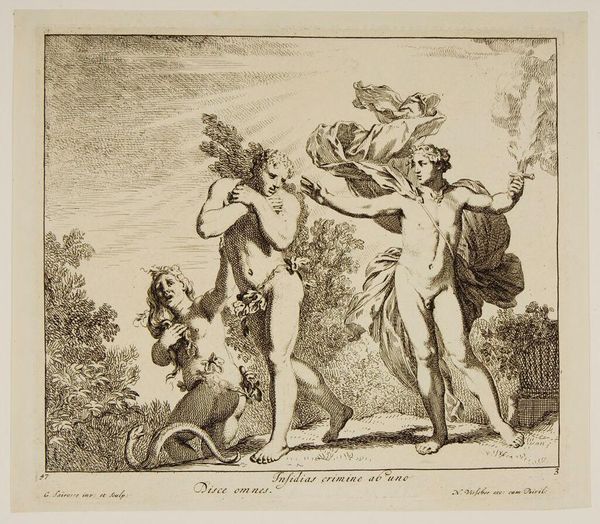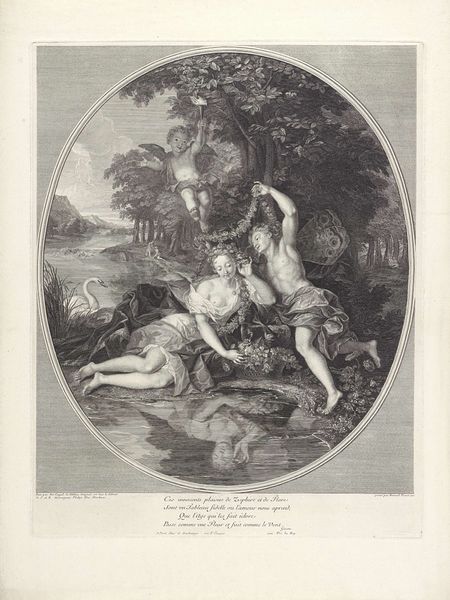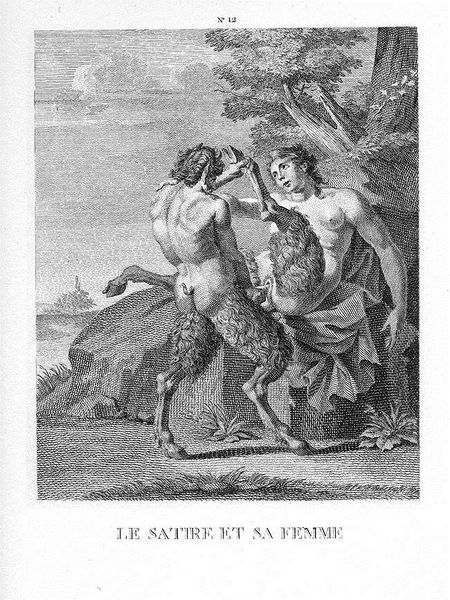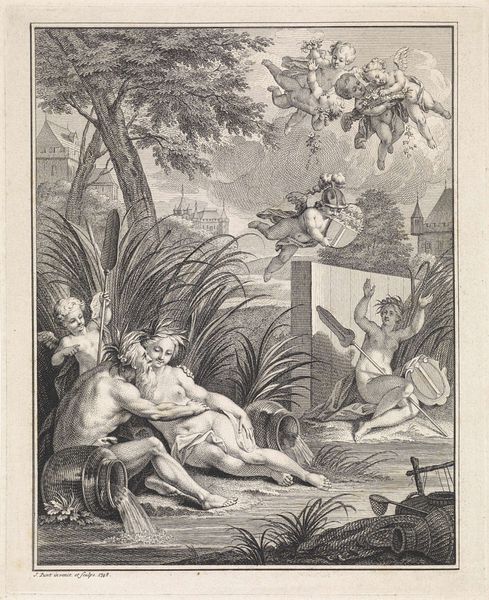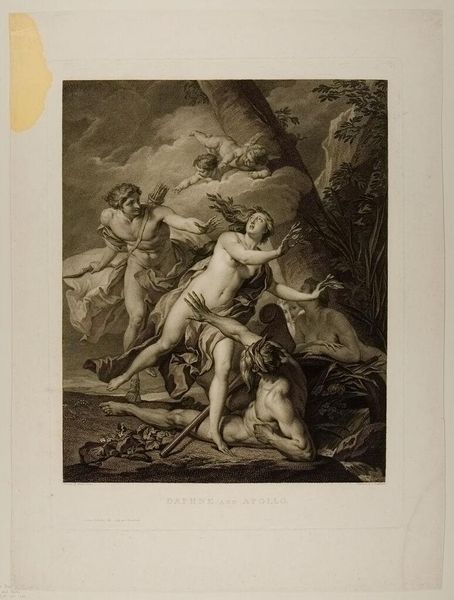
Dimensions: Image: 8.6 Ã 6.1 cm (3 3/8 Ã 2 3/8 in.) Sheet: 12.6 Ã 8.5 cm (4 15/16 Ã 3 3/8 in.)
Copyright: CC0 1.0
Editor: Here we have Delvaux's "Marsyas", an engraving on paper. It depicts the flaying of Marsyas by Apollo. I’m struck by how classical it feels, but also how brutal. What historical context informs this image? Curator: Consider how Delvaux engages with the classical tradition to legitimize a particular cultural narrative. The story of Marsyas served as a cautionary tale against hubris, but also highlights the brutal exercise of power by Apollo. What do you make of the setting? Editor: It looks like an idealized landscape, but also emphasizes Marsyas’s vulnerability and isolation. Almost as if nature itself is indifferent to his suffering. Curator: Precisely. The landscape serves not just as a backdrop, but also as a stage for the enactment of power. Delvaux positions Apollo as the epitome of order and civilization, while Marsyas is othered. Editor: So, it's not just about the myth, but about power dynamics and cultural values? Curator: Exactly. Art often reflects and reinforces societal structures. Examining these power structures is crucial. Editor: I hadn’t considered how the landscape could be such an active participant in the narrative. Thanks! Curator: My pleasure. It's rewarding to see these classical scenes through the lens of cultural history.
Comments
No comments
Be the first to comment and join the conversation on the ultimate creative platform.
